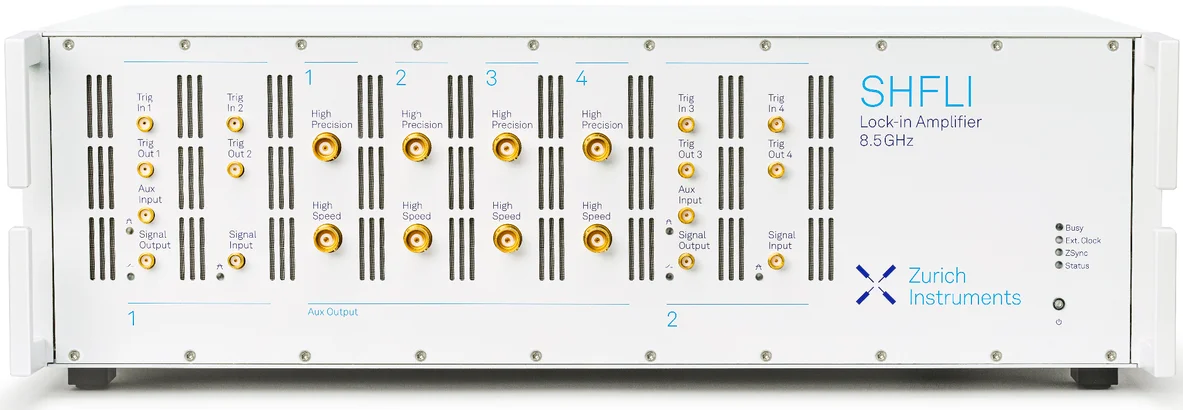Drive, Sense, Control and Validate With One Instrument
Thanks to an ever-growing number of emerging sensing technologies, the field of sensor development is constantly pushing boundaries. Miniaturization, higher sensitivities, exploitation of quantum effects, and ever-increasing precision drive the need for instrumentation capable of characterizing these demanding devices.
Zurich Instruments Lock-in Amplifiers meet these instrumentation requirements with integrated PID/PLL control loops and modulation analysis capabilities. They provide you with the power and versatility you need to unlock the full potential of your sensor designs, capable of working with signals from DC up to 8.5 GHz.
Whether you are characterizing noise performance or impedance, performing frequency response analysis, or implementing advanced feedback loops, Zurich Instruments offers a comprehensive one-box solution. This versatility allows you to test your sensor before designing control circuitry.
Read on and discover how hardware and software designed to work in harmony can help you reach your goals faster.
Product Highlights
What’s Your Application?
Check a list of our dedicated application pages and learn how your research can benefit from the capabilities of our instruments.
Webinar
A sensor generates an electrical signal that depends on the physical quantity we aim to measure. Achieving the desired performance is an iterative process that begins with finding suitable materials, sensing methods, and control parameters. A complete toolset to characterize the prototype with efficient workflows is crucial to keep up with the project timelines. In this webinar, Kıvanç Esat and Jim Phillips present the measurement requirements, discuss the essential tools, and explain best practices with examples to accelerate your testing.
Customers Success Stories
Find out how Zurich Instruments' users are boosting their measurements.
Zurich Instruments' digital lock-ins have been of great value for my project on resonant mass sensors. Measurement schemes such as lock-in detection or phase-locked loops have been known for decades, but they have never been so easy to implement and configure.

Tomás Manzaneque García
Assistant Professor at TU DelftWe used our UHFLIs to detect coherent nanomechanical oscillations driven by single-electron tunneling in a suspended carbon nanotube.

Natalia Ares
Royal Society University Research Fellow in the Materials Department at the University of OxfordZurich Instruments AG 2025 | Standard Terms & Conditions | Website Terms of Use | Privacy Policy








